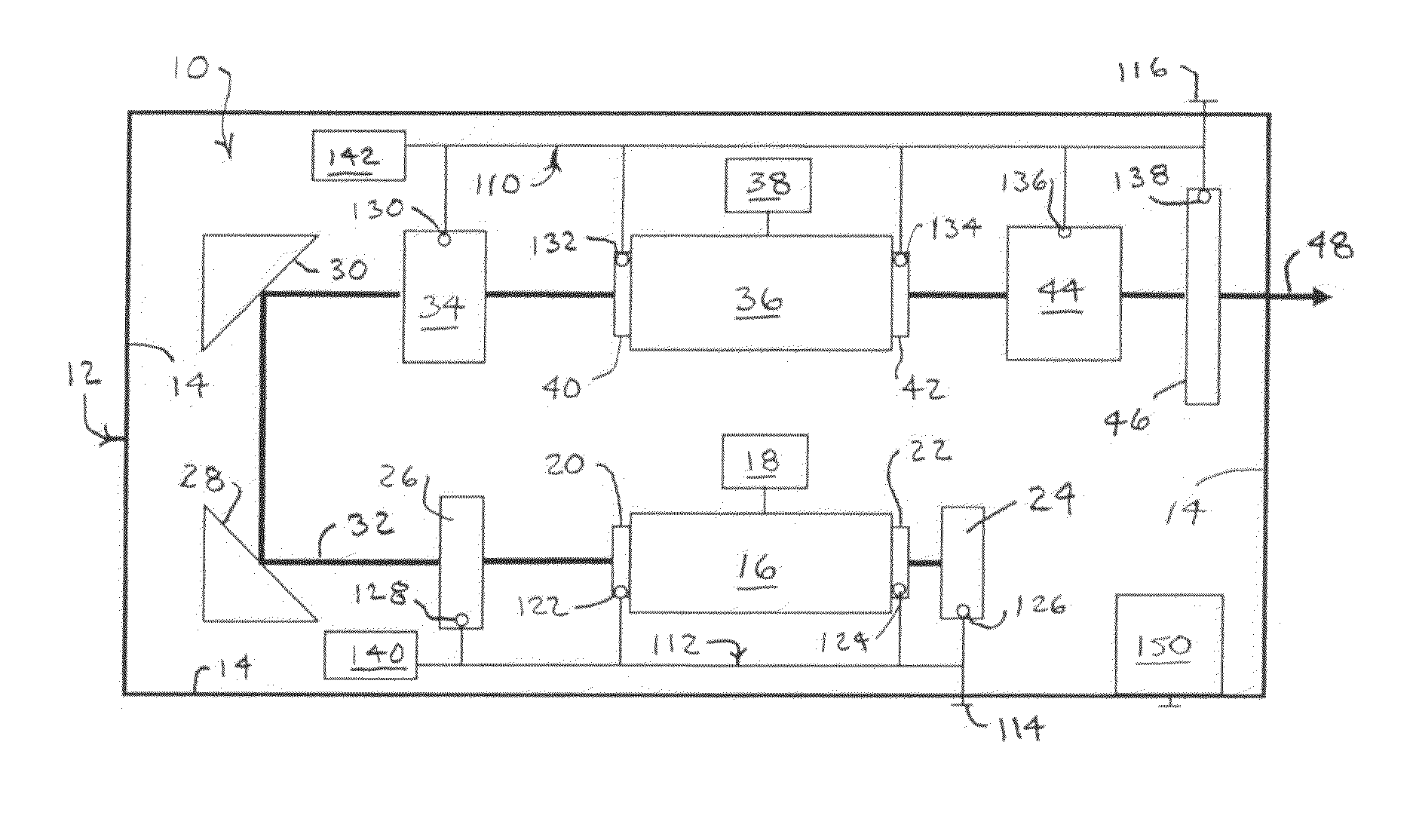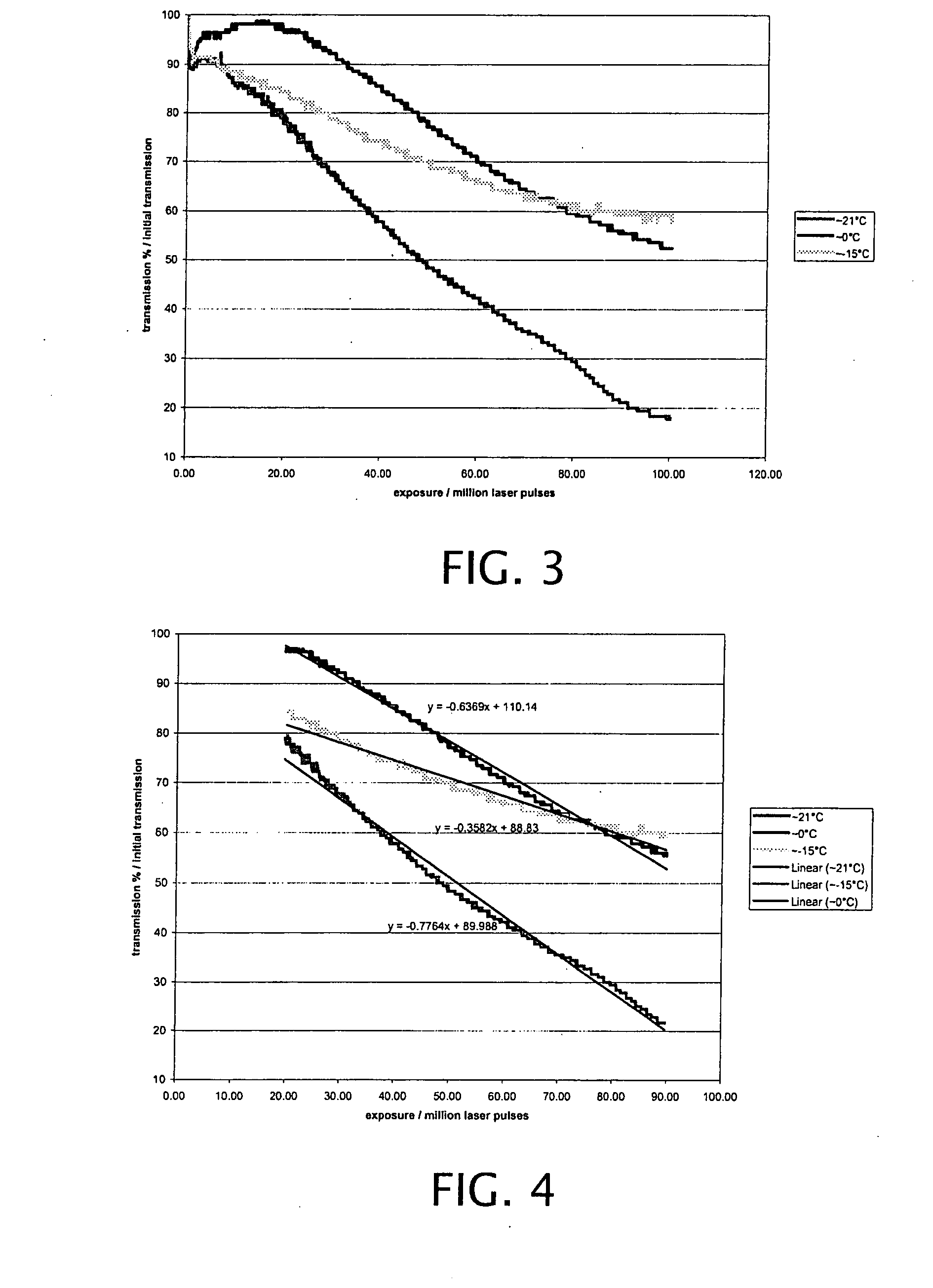Active cooling of crystal optics for increased laser lifetime
a technology of active cooling and crystal optics, applied in the field of cooling systems, can solve the problems of lowering the overall cost of laser operation and ownership, and achieve the effects of reducing the operating temperature of beam-conveying optics, reducing optic degradation, and reducing operating temperatur
- Summary
- Abstract
- Description
- Claims
- Application Information
AI Technical Summary
Benefits of technology
Problems solved by technology
Method used
Image
Examples
Embodiment Construction
[0030]A laser generating apparatus 10 as depicted in FIG. 1 is mounted within a housing 12 providing an enclosed pathway for isolating the laser generating apparatus from a surrounding environment. The housing 12 is preferably filled with an inert gas, such as nitrogen N2. The walls 14 of the housing 12 can also be arranged to insulate the contents of the housing 12 from changes in ambient temperature.
[0031]The laser generating apparatus 10 includes a gas-filled oscillator 16 powered by a control module 18. A gain medium is confined within the oscillator 16 by windows20 and 22. A resonant cavity is formed through the oscillator between a line-narrowing module 24 and an output coupler 26. Mirrors 28 and 30 convey a developing laser beam 32 to a beam shaper and aligner 34 in advance of an amplifier 36. A control module 38 powers the amplifier 36 to augment and stabilize pulse energy. The amplifier 36 can be arranged as a similar discharge chamber with windows 40 and 42 arranged for co...
PUM
 Login to View More
Login to View More Abstract
Description
Claims
Application Information
 Login to View More
Login to View More - R&D
- Intellectual Property
- Life Sciences
- Materials
- Tech Scout
- Unparalleled Data Quality
- Higher Quality Content
- 60% Fewer Hallucinations
Browse by: Latest US Patents, China's latest patents, Technical Efficacy Thesaurus, Application Domain, Technology Topic, Popular Technical Reports.
© 2025 PatSnap. All rights reserved.Legal|Privacy policy|Modern Slavery Act Transparency Statement|Sitemap|About US| Contact US: help@patsnap.com



